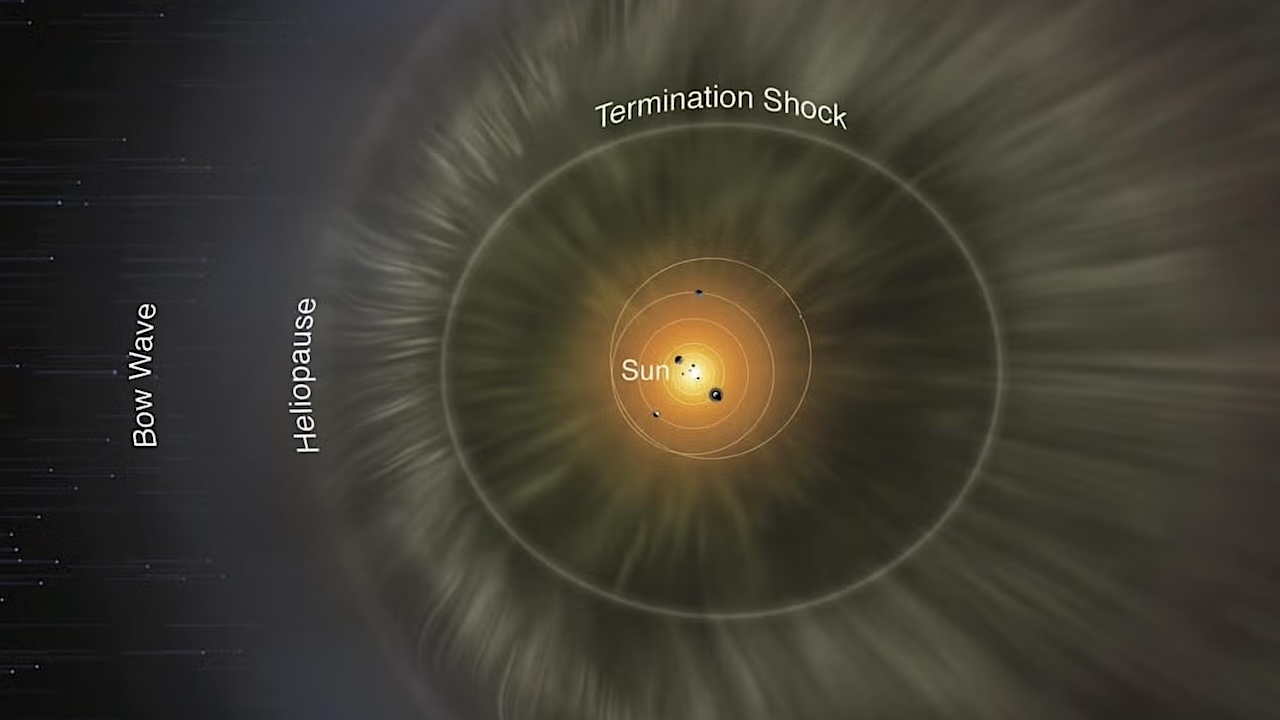Interstellar Dust Experiment (IDEX) On IMAP Will Collect Stardust

A scientific instrument from Colorado is scheduled to launch into space from NASA’s Kennedy Space Center in Florida—beginning its search for very small visitors to our solar system from the galaxy beyond.
The Interstellar Dust Experiment (IDEX) is one of 10 instruments flying aboard NASA’s Interstellar Mapping and Acceleration Probe (IMAP). Among other goals, the mission will investigate the energization of charged particles streaming from the sun, known as the solar wind, and its interaction at its boundary with interstellar space.
IDEX was designed and built by a team at the University of Colorado Boulder’s Laboratory for Atmospheric and Space Physics (LASP). Shaped like a large drum, the instrument will collect and analyze grains entering our solar system from interstellar space. It will also collect particles shed from comets and asteroids in our own solar system.
“Interstellar dust gets to the very heart of the origin and evolution of the solar system,” said IDEX Instrument Lead Mihály Horányi, a scientist at LASP and professor in the Department of Physics at CU Boulder. “It may be the closest thing we have today to the building blocks of our solar system billions of years ago.”
These particles, sometimes known as “stardust,” have been traveling for a long time.

IDEX with its door open. (Credit: CU Boulder/Patrick Campbell)
When massive stars die, they explode in brilliant supernovas, scattering their remains far into the galaxy. This river of stardust churns through the Milky Way for millions of years, entering our solar system with a speed of about 58,000 miles per hour.
“The IMAP mission marks a leap forward in understanding how our sun interacts with our local interstellar neighborhood,” said Bethany Ehlmann, director of LASP. “I’m excited to see the launch and looking forward to the insights that the ambitious mission will tell us about the origins and evolution of our solar system.”
932,000 miles
After IMAP lifts off from Florida, the spacecraft will begin a nearly four-month journey over 932,000 miles (1.5 million kilometers) to a location in space that called Lagrange Point 1 (L1)—roughly 1% of the way from Earth to the Sun. It’s a sort of parking lot in space where a spacecraft can maintain its position without using a lot of fuel.
IDEX will start its work before that. Several weeks after launch, the instrument will flip open its door and begin preparing to collect dust.
43 particles
Interstellar dust continually flows into our solar system, moving in a single direction like a current. Astronomer Carl Sagan referenced this material in his famous quote, “The cosmos is within us. We are made of star-stuff.” Most of this dust has likely been destroyed and recondensed multiple times over its journey, Horányi said.
To date, scientists have only detected and analyzed 43 grains of interstellar material, in addition to a handful of candidate grains found embedded in meteorites. IDEX will be entering a mostly uncharted territory.
“Every single grain has a high level of importance to us,” Horányi said.
When these particles zip into the instrument, they will smack into a target at its back, instantly vaporizing into a puff of neutral elements, electrons and ions. IDEX will analyze the ions from each impact, identifying the materials that make up the dust. That may include minerals rich in elements like silica, magnesium, and iron, and possibly larger organic molecules.
16.15 inches
To capture interstellar dust, the IDEX team developed the largest instrument of this kind. IDEX weighs about 47 pounds. Its opening measures more than 20 inches across, and the target at its back is 16.15 inches wide.
Altogether, the IDEX team estimates that it could collect around 100 grains of interstellar dust every year during the first two years of the primary IMAP mission.
IDEX comes from a long line of dust instruments built by LASP. They include the Europa SUrface Dust Analyzer (SUDA), which launched for Jupiter’s moon Europa last year aboard NASA’s Europa Clipper spacecraft.
Scott Tucker, project manager for IDEX, noted that the instrument will also collect grains of interplanetary dust, or material shed from comets and asteroids in our solar system. These particles move a lot slower than stardust, so he and his colleagues designed the instrument to accommodate a wide range of impacts—which required careful design of IDEX’s electronics.
“We want to measure things that are small and not very fast, and things that are bigger and very fast,” said Tucker, director of engineering at LASP.
248 degrees Fahrenheit
In some cases, particles of dust may leave residue behind when they vaporize on the IDEX target, which could contaminate future data—a bit like gunk on a car windshield.
The instrument team has a solution: The group will periodically raise the temperature of the IDEX target to 248 degrees Fahrenheit, burning away most of that residue. The target itself is coated in a layer of ultra-pure gold roughly 5 microns thick, or a little thicker than a human red blood cell.
“The target is going to be maintained to remain pristine, good as new again and again,” Horányi said.
87 names
It took a large team to make IDEX a reality, including professional scientists and engineers, and many students. When the instrument launches, it will carry a plaque with the names of 87 of these team members—although Horányi estimates that closer to 100 people participated in the IDEX project.
Tucker and Horányi will be part of a contingent from LASP attending the launch in Florida.
“IDEX is going to be a whole different chapter in our ability to do these types of measurements, Horányi said. “I can hardly wait to look at the first impact.”
Astrobiology, astrochemistry, astrogeology,



